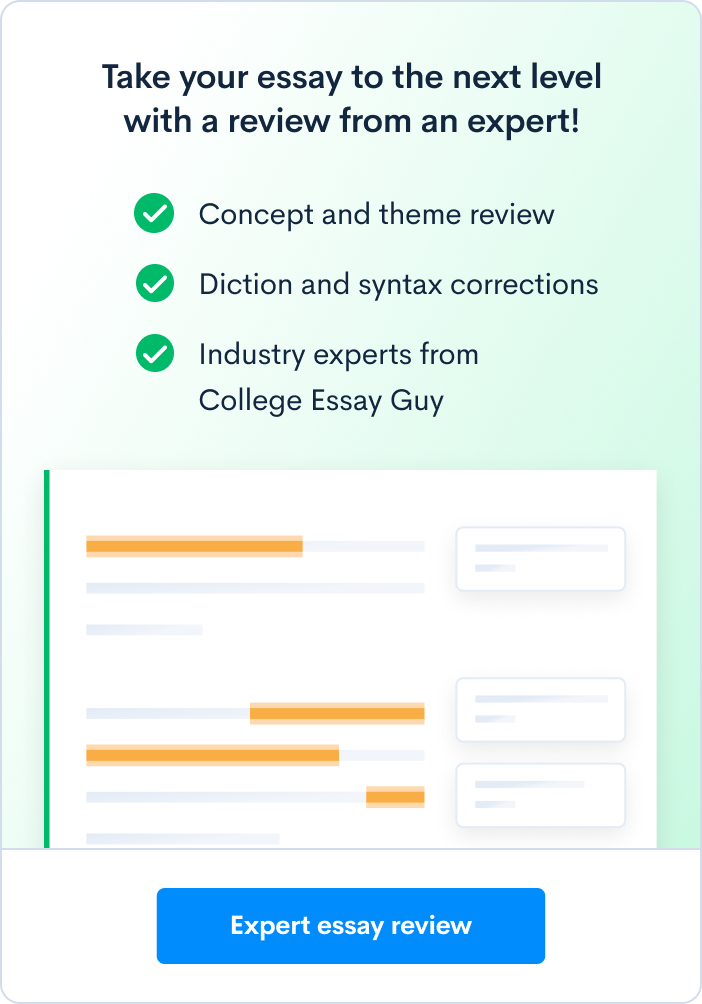Ultimate Guide to the AP Physics 1 Exam
The AP Physics 1 exam is one of the more popular AP exams among students. In 2016, more than 160,000 students took the exam, making it by far the most popular of the four AP Physics offerings. If you’re planning to take the exam, whether you’ve taken the class or have self-studied, read on for a breakdown of the test and CollegeVine’s advice for how you can best prepare for it. On Thursday, May 14 at 4 pm, the College Board will administer the 2020 AP Physics 1 exam. For the complete AP exam schedule (updated due to Coronavirus), along with study tips and more, check out our blog 2020 AP Exam Schedule: Everything You Need to Know. In 2014, the AP Physics B course was divided into the new AP Physics 1 and AP Physics 2 courses in order to accommodate deeper conceptual understanding and student-centered, inquiry-based instruction. This redesign is aligned with a larger push in AP coursework to emphasize critical thinking and reasoning, as well as learning through inquiry. Dividing the previous Physics B course into two new courses allows for more time to master foundational physics principles while engaging in science practices to earn credit or placement. Keep in mind that credit and advanced standing based on AP scores vary widely from school to school. Though a score of three is typically considered passing, it is not always enough to receive college credit. There is an online resource for regulations regarding which APs qualify for course credits or advanced levels at specific colleges and universities. Although there are no formal prerequisites for AP Physics 1, you will need to have completed geometry and be concurrently taking Algebra II or an equivalent course to grasp the calculations required for the coursework. This understanding should extend to the basic use of trigonometric functions, though the knowledge can also be gained either in the concurrent math course or in the AP Physics 1 course itself. The AP Physics 1 course is the equivalent of a first-semester, algebra-based college physics course. It covers Newtonian mechanics (including rotational motion); work, energy, and power; mechanical waves and sound; and introductory, simple circuits. All of these topics are covered within the frameworks of six big ideas and seven science practices. Due to the course’s heavy emphasis on inquiry-based learning, 25% of class time is devoted to hands-on laboratory work wherein students ask questions, make observations and predictions, design experiments, analyze data, and construct arguments in a collaborative setting. Big ideas are the foundational concepts and themes of AP Physics 1. By studying them in a variety of contexts, students build a deeper conceptual understanding of the field. The six big ideas of AP Physics are: Big ideas are explored through scientific practices. The seven scientific practices developed in AP Physics 1 and the weight they’re given on the multiple-choice section of the AP Physics 1 exam are: The AP Physics 1 course is commonly divided into 10 commonly taught units. Teachers may organize the course however they wish, but the College Board does suggest a sequence. Below are the course units, a short description of each, the College Board’s suggested sequence, and the weight each unit is given on the multiple-choice section of the AP Physics 1 exam. The AP Physics 1 exam is one of the longer AP exams, clocking in at three hours. It comprises two sections: one section of multiple-choice questions, and one section of free-response questions. Section 1: Multiple Choice 1 hour 30 minutes | 50 questions | 50% of score The first section of the AP Physics 1 exam contains 50 multiple-choice questions, spans one hour and 30 minutes, and accounts for 50% of your total score. Forty-five of the multiple-choice questions are single-select (one answer), and some of them are stand-alone, while others come in groups using the same stimulus or data set. Five of the multiple-choice questions are multi-select (two answers are correct). Example of an individual, single-set, multiple-choice question: Answer: D. Source: College Board. Example of a set of multiple-choice questions: Answer: 5: C, 6: A, 7: C. Source: College Board. Example of a multi-select multiple-choice question: Answer: A, D. Source: College Board Section 2: Free Response 1 hour 30 minutes | 5 questions | 50% of score The second part of the exam is the free-response section, which also lasts for one hour and 30 minutes and accounts for the remaining 50% of your score. This section is divided into five questions: The first two questions (experimental design and qualitative/quantitative translation) are weighted heavier than the three short-answer questions. Experimental design and qualitative/quantitative translation are both 12-point questions, while the short-answer questions are worth seven points each. Example of a qualitative/quantitative translation free-response question: Source: College Board. Example of a paragraph-argument, short-answer, free-response question: Source: College Board. You are expected to bring and use a four-function graphing or scientific calculator on the exam. You should be familiar with your calculator, and it’s a good idea to bring extra batteries. Sharing calculators during the exam is not allowed, but you may bring up to two calculators. You can find the complete calculator policy and a list of acceptable models on the College Board website. In 2019, the AP Physics 1 exam held the distinction of being one of the most difficult AP exams—it has the lowest pass rate and the third-lowest percentage of students who scored a 5. Only 45.4% of students taking the exam passed it (by receiving a score of 3 or above), and a scant 6.7% received the highest score of 5. Nearly a quarter of all test-takers received the lowest score possible, a 1. For this reason, you will need to make sure that you study the material thoroughly, using all possible means to master your skills and grasp the big ideas before exam day. It’s important to start your studying off with a good understanding of your existing knowledge. You can find sample questions with scoring explanations included in the AP Physics 1 course description, and there are more available in a separate Sample Questions AP Physics 1 and AP Physics 2 Exams booklet. You can also find practice exams in many of the commercial study guides. The theory that you will need to know for AP Physics 1 ranges in depth from very broad topics to the application of specific equations. For a specific idea of where to focus your studying, you may consider using an updated commercial study guide. The Princeton Review’s Cracking the AP Physics 1 Exam, 2020 Edition: Practice Tests & Proven Techniques to Help You Score a 5 provides a fairly comprehensive guide to the exam content, though at over 400 pages, it is sometimes criticized for its length. Another solid choice is Barron’s AP Physics 1 and 2, which is designed around AP Physics 1’s big ideas and scientific principles. Additionally, there are a number of free study resources available online. Many AP teachers have posted complete study guides, review sheets, and test questions—here is an example of a particularly helpful teacher-posted website. One complete final review study guide is available, as well as a free online course. There are also video tutorials for each unit and free-response explanations available for free from Khan Academy. Another convenient way to study is to use one of the recently developed apps for AP exams. Make sure you read reviews before choosing one—their quality varies widely. One app that does receive good reviews is the AP Physics 1 app created by Varsity Tutors, and it’s totally free. Finally, make sure to familiarize yourself with the tools that will be available to you during the exam. Make sure that you know how to use your calculator effectively. Also, review the table of equations that will be furnished to you during the exam. Practice some multiple-choice questions to put your knowledge to the test and to fine-tune your test-taking skills. You can find these in most study guides or through online searches—Varsity Tutors and Study.com are both great places to start. You could also try taking the multiple-choice section of another practice exam. There are numerous practice multiple-choice tests available, including AP Physics 1 Supplemental Problem Sets. The College Board Course Description also includes many practice multiple-choice questions along with explanations of their answers. As you go through these, try to keep track of which areas are still tripping you up, and go back over this theory again. Focus on understanding what each question is asking, and keep a running list of any concepts that are still unfamiliar. There are three different types of questions in the AP Physics 1 free-response section. The first type consists of short-answer questions, one of which will demand a paragraph-length response. This is a specific clue from the College Board about the type of response you will need to produce for full credit. A handout from the College Board explains that paragraph-length responses ask you to demonstrate an ability to communicate your understanding of a physical situation in a reasoned, expository analysis. Readers look for responses that offer a “coherent, organized, and sequential description of the analysis” using strong evidence from the course curriculum such as specific physical principles. In AP Physics 1, the argument may include diagrams, graphs, equations, and perhaps calculations to support the line of reasoning, but it should be based primarily on strongly written analysis without extraneous detail. The College Board summarizes that a successful response will “analyze a situation and construct a coherent, sequenced, well-reasoned exposition that cites evidence and principles of physics.” Another portion of the free-response section tasks you with evaluating an experimental design. You will need to be familiar with your own lab investigations and draw upon your real-world experience in inquiry-based instruction to design an experiment, justify your design, describe your measurements, and critique the value of your hypothetical results. The remaining portion of the free-response section asks you to perform a quantitative/qualitative translation. In this section, you will make a qualitative judgment about which physical principles apply to a given situation and then use these principles quantitatively to solve an equation. Often, you will take your thinking one step further and infer how the equation might apply to other similar situations. Exam readers expect you to pay close attention to the task verbs used in the free-response prompts. On the AP Physics 1 exam, these most commonly include: describe, explain, justify, calculate, derive, determine, sketch, plot, draw, label, design, or outline. Know precisely what each one of these words is asking you to do. The definitions of these words can be found beginning on page 149 of the course description. Underline each section of the question, circle the task verb, and check them off as you write. Many students lose points by simply forgetting to include one part of a multi-part question. Remember that credit for the answers depends on the quality of the solutions and the explanations are given; partial solutions may receive partial credit, so you should show all your work. Correct answers without supporting work may not earn full credit. Last but not least, make sure to review the examples of scored free-responses so that you can understand exactly what to expect in this section and how you will be evaluated. The College Board provides many examples of actual prompts from the past years and includes authentic student responses with scores and an explanation of why they were scored that way. After you’ve completed an initial review of the material and the test, take another practice test to evaluate your progress. You should see a steady progression of knowledge, and be able to identify which areas have improved the most and which areas still need improvement. If you have time, repeat each of the steps above to incrementally increase your score. If you’re taking the AP course associated with this exam, your teacher will walk you through how to register. If you’re self-studying, check out our blog post How to Self-Register for AP Exams. For information about what to bring to the exam, see our post What Should I Bring to My AP Exam (And What Should I Definitely Leave at Home)? Want access to expert college guidance—for free? When you create your CollegeVine account, you’ll be able to find out your real admissions chances, build a best-fit school list, learn how to improve your profile, and get your questions answered by experts and peers—all for free! Sign up for your CollegeVine account today to get a boost on your college journey. For more about APs, check out these other CollegeVine posts: When is the AP Physics 1 Exam?
About the AP Physics 1 Course
AP Physics 1 Course
Big Idea
Description
Systems
Objects and systems have properties such as mass and charge; systems may have an internal structure
Fields
Fields existing in space can be used to explain interactions
Force Interactions
The interactions of an object with other objects can be described by forces
Change
Interactions between systems can result in changes in those systems
Conservation
Changes that occur as a result of interactions are constrained by conservation laws
Waves
Waves can transfer energy and momentum from one location to another without the permanent transfer of mass and serve as a mathematical model for the description of other phenomena
Scientific Practice
Description
Weight on Free-Response Section of Exam
Modeling
Use representations and models to communicate scientific phenomena and solve scientific problems
28%-32%
Mathematical Routines
Use mathematics appropriately
16%-20%
Scientific Questioning
Engage in scientific questioning to extend thinking or to guide investigations within the context of the AP course
Not Assessed
Experimental Methods
Plan and implement data collection strategies in relation to a particular scientific question
2%-4%
Data Analysis
Perform data analysis and evaluation of evidence
10%-12%
Argumentation
Work with scientific explanations and theories
24%-28%
Making Connections
Connect and relate knowledge across various scales, concepts, and representations in and across domains
10%-16%
Unit
Description
Weight on Multiple-Choice Section of Exam
Kinematics
The study of motion
10%-16%
Dynamics
Explore the interaction of an object with another object—force
12%-18%
Circular Motion and Gravitation
Study more complex models of motion, such as the circular path of a satellite orbiting a planet
4%-6%
Energy
The definitions of and relationships between energy, work, and power
16%-24%
Momentum
The relationship between force, time, and momentum and the law of conservation of momentum
10%-16%
Simple Harmonic Motion
Analyze a new type of motion: simple harmonic motion
2%-4%
Torque and Rotational Motion
The motion of an object rotating around an axis and torque, the measure of a force that can cause rotational motion
10%-16%
Electric Charge and Electric Force
Learn about the electric force and the properties and interactions of electric charges
4%-6%
DC Circuits
Examine electric circuits and the interactions between current, resistance, and voltage
6%-8%
Mechanical Waves and Sound
The properties and behavior of waves that travel through a medium such as air or water
12%-16%
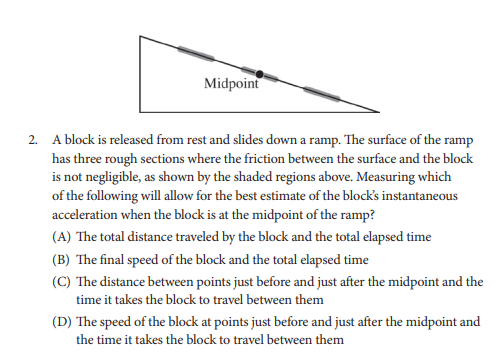
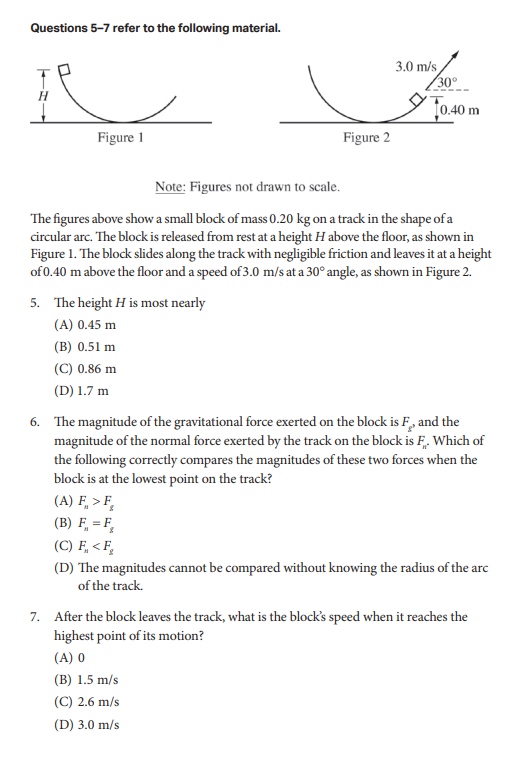

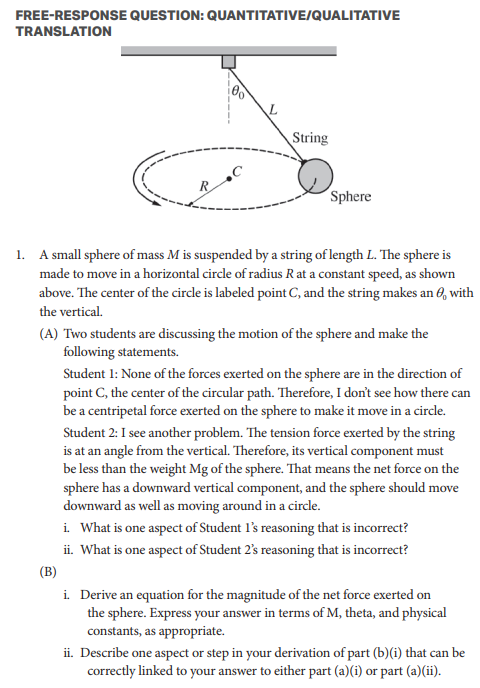
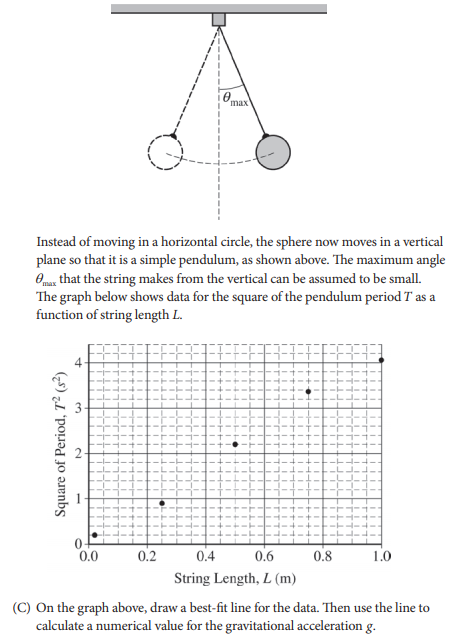
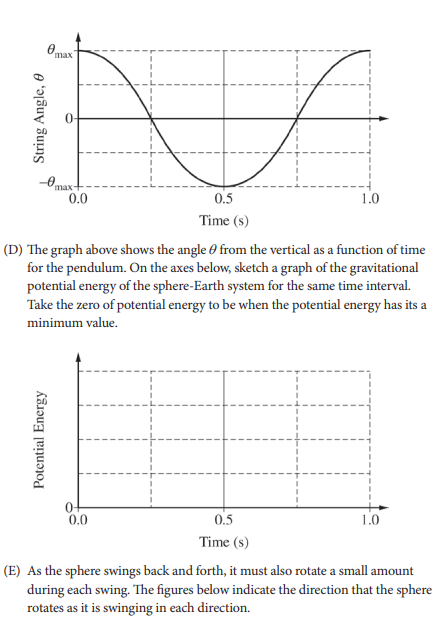
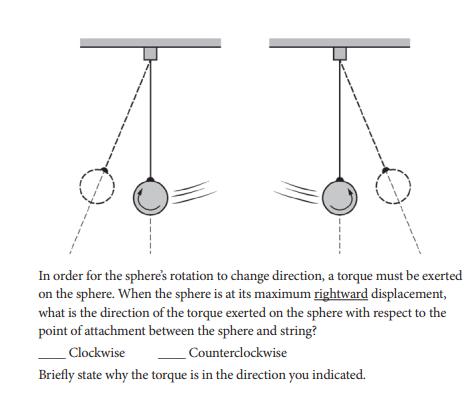
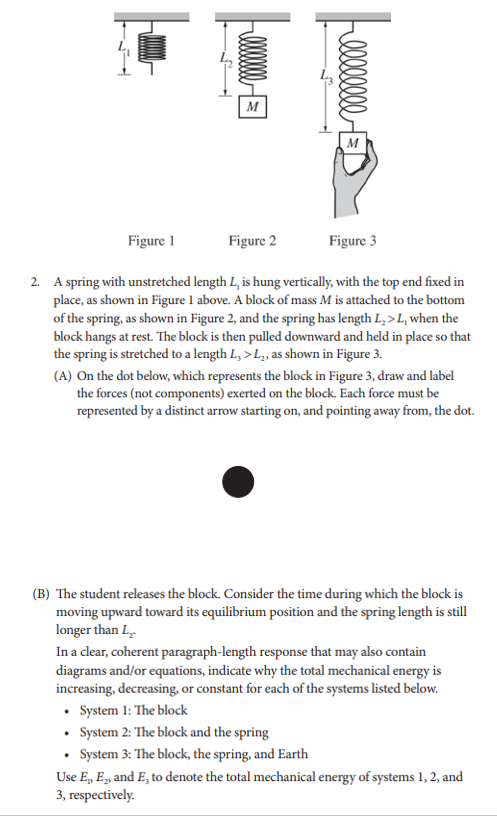
AP Physics 1 Score Distribution, Average Score, and Passing Rate
Exam
5
4
3
2
1
AP Physics 1
6.7%
18.2%
20.5%
28.7%
25.9%
Tips to Prepare for the AP Physics 1 Exam
Step 1: Assess Your Skills
Step 2: Study the Material
Step 3: Practice Multiple-Choice Questions
Step 4: Practice Free-Response Questions
Step 5: Take Another Practice Test
Step 6: Exam Day Specifics

